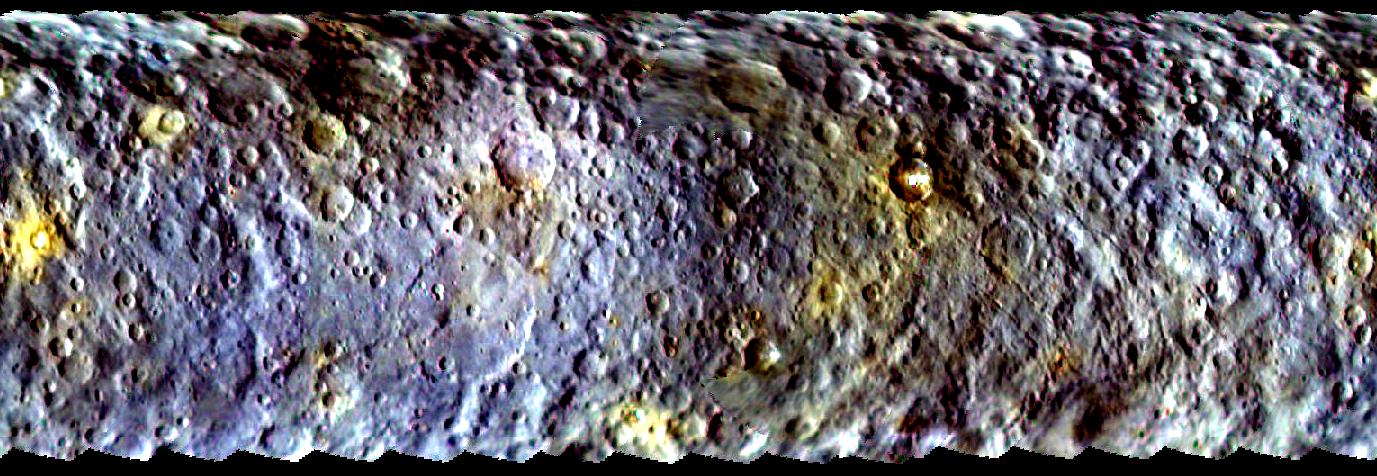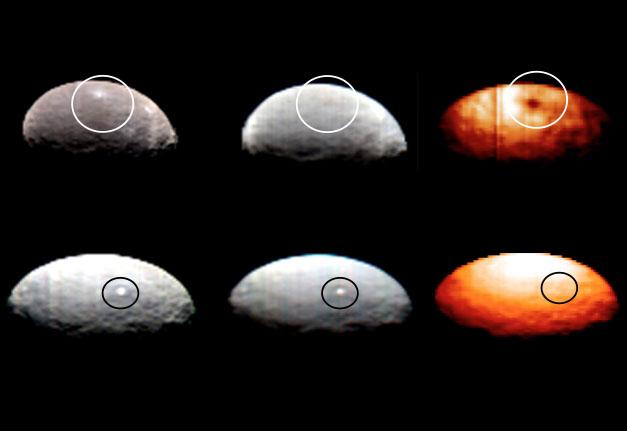Weird Bright Spots on Dwarf Planet Ceres Still a Mystery in New Maps

Strange bright spots on the surface of the Ceres continue to mystify scientists even as NASA's Dawn spacecraft is beaming the best maps yet of the dwarf planet in the asteroid belt.
The latest photos of Ceres from Dawn, which NASA released on Monday (April 13), were captured just before the spacecraft entered orbit around the dwarf planet in March. Dawn is now in the shadow of Ceres, forcing scientists to wait until later this month before catching their next day lit view of the surface.
While about 10 bright spots on Ceres have been detected in photos by the Hubble Space Telescope, the Dawn spacecraft has revealed that the two most prominent are in a crater about 57 miles wide (92 kilometers).
"The bright spots continue to fascinate the science team, but we will have to wait until we get closer and are able to resolve them before we can determine their source," Chris Russell, principal investigator for the Dawn mission at the University of California, Los Angeles, said in a statement.
NASA released new images from Dawn's visible and infrared mapping spectrometer examining the bright spots, as well as a new color map showing the dwarf planet's entire surface.
The pictures show that Ceres has many craters, but fewer large ones that scientists expected. Also, the temperatures of the two prominent bright spots vary: one is similar to the surrounding surface, while the other is cooler.
"This dwarf planet was not just an inert rock throughout its history. It was active, with processes that resulted in different materials in different regions. We are beginning to capture that diversity in our color images," Russell added.
Breaking space news, the latest updates on rocket launches, skywatching events and more!
Dawn will begin its extended mapping phase of Ceres on April 23 from a distance of 8,400 miles (13,500 kilometers) from the surface. It will remain with the dwarf planet in 2016. Ceres is the second body in the asteroid belt that Dawn visited; the spacecraft stayed with asteroid Vesta between 2011 and 2012.
Follow Elizabeth Howell @howellspace, or Space.com @Spacedotcom. We're also on Facebook and Google+. Originally published on Space.com.

Elizabeth Howell (she/her), Ph.D., was a staff writer in the spaceflight channel between 2022 and 2024 specializing in Canadian space news. She was contributing writer for Space.com for 10 years from 2012 to 2024. Elizabeth's reporting includes multiple exclusives with the White House, leading world coverage about a lost-and-found space tomato on the International Space Station, witnessing five human spaceflight launches on two continents, flying parabolic, working inside a spacesuit, and participating in a simulated Mars mission. Her latest book, "Why Am I Taller?" (ECW Press, 2022) is co-written with astronaut Dave Williams.

